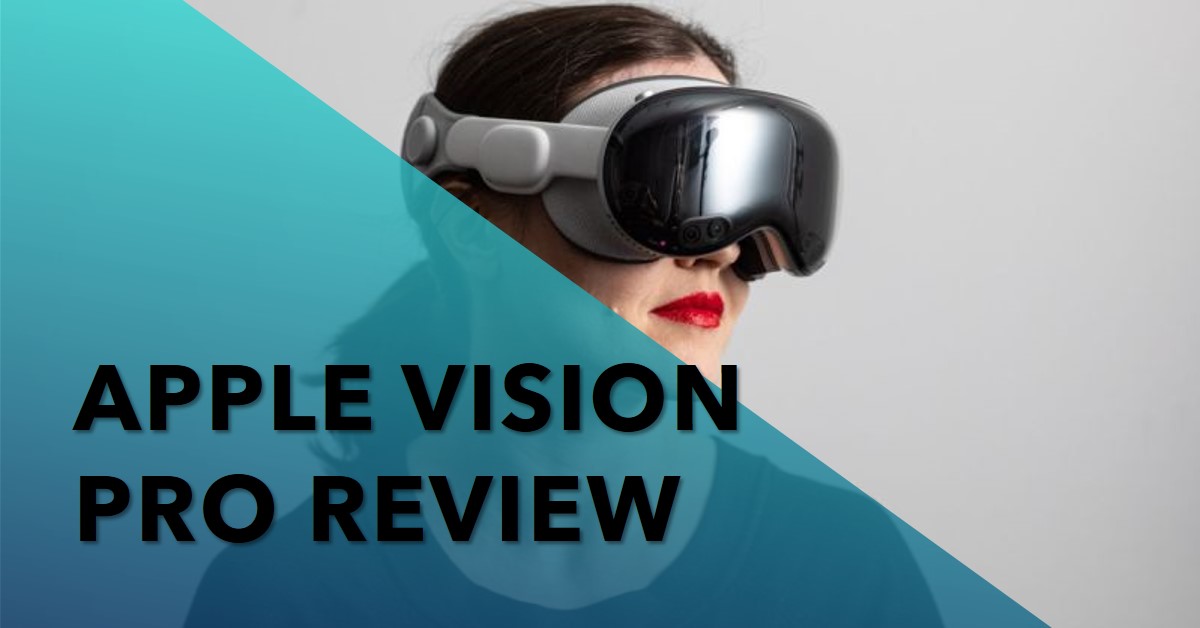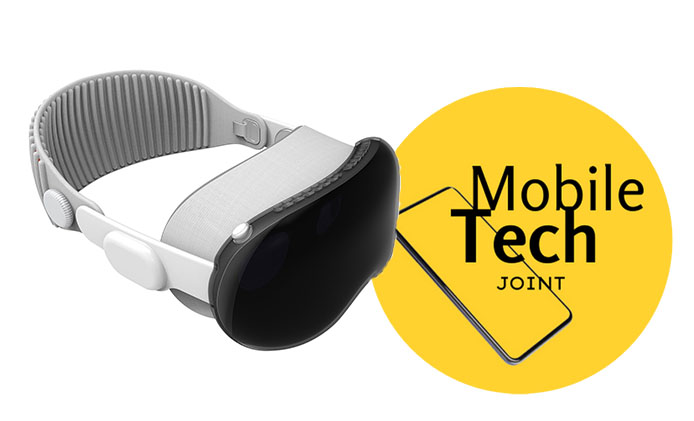I’ve spent some time using the Apple Vision Pro, and it’s safe to say this augmented reality headset is unlike anything I’ve experienced. This device is a bold move for Apple, blending augmented reality (AR) with virtual reality (VR) to deliver a truly immersive experience. However, with a price tag starting at $3,499, it’s not without its drawbacks. In this review, I’ll take you through everything I love about the Apple Vision Pro, and the areas where it falls short.

Key Takeaways
| Feature | Apple Vision Pro |
|---|---|
| Display | 4K per eye, Micro OLED technology |
| Processor | Apple M2 and R1 chips |
| Operating System | VisionOS |
| Battery Life | Up to 2 hours with external battery, all-day plugged |
| Price | Starting at $3,499 |
| Release Date | 2024 |
Design and Build Quality: A Premium, Futuristic Look
The first thing I noticed about the Apple Vision Pro is its sleek design. The combination of glass, aluminum, and soft fabric gives it a premium look and feel. The adjustable headband is a nice touch, allowing it to fit snugly on my head without causing discomfort, even during longer sessions.
However, it’s bulkier than I expected. While Apple has made efforts to keep the headset lightweight, after wearing it for an extended period, I began to feel the strain, especially around the eyes and forehead. Compared to competitors like the Meta Quest Pro and Microsoft HoloLens, the Vision Pro feels more premium, but it could benefit from being more portable.
Pros and Cons of the Design
- Pros: Sleek, premium materials, comfortable headband
- Cons: Bulkier than expected, may cause discomfort during extended use
Display and Visual Experience: Immersive and Crystal Clear
When it comes to display, the Apple Vision Pro shines. With a 4K micro OLED display per eye, the visual clarity is breathtaking. The images are sharp, and the colors are vivid, making it perfect for everything from gaming to watching movies in AR. The full-color passthrough technology allows you to see your surroundings in real-time while interacting with virtual objects, which is a huge step forward for AR headsets.
Apple’s EyeSight feature adds a unique touch, letting others see your eyes when you’re not fully immersed in virtual content. It’s a thoughtful addition that makes the Vision Pro feel less isolating compared to other headsets.
Comparison to Competitors
I’ve tried other headsets like the Meta Quest Pro and HoloLens 2, and the Vision Pro blows them out of the water in terms of display clarity. The visual latency is practically non-existent, making the experience feel natural and immersive.
Performance: Powered by M2 and R1 Chips
Performance-wise, the Apple Vision Pro doesn’t disappoint. The combination of the M2 chip (which handles general computing tasks) and the R1 chip (designed to process real-time inputs from the cameras and sensors) ensures a seamless experience, even during high-intensity tasks like gaming or 3D content creation.
I tested the headset with a few AR games and some 3D modeling software, and it handled everything smoothly without any lag. The thermal management system also kept the headset cool, even after hours of continuous use.
Use Case Benchmarks
- Gaming: The Vision Pro offers a smooth and immersive gaming experience, particularly with AR-based games.
- Professional Work: The M2 and R1 chips handled intensive applications like video editing and 3D modeling with ease.
VisionOS: A New Operating System for AR
The VisionOS is Apple’s new operating system built specifically for augmented reality. It feels intuitive, and I love the gesture-based controls. I can navigate menus and interact with virtual objects using simple hand gestures and eye tracking, without needing a physical controller.
It’s also great to see how VisionOS integrates seamlessly with macOS and iOS, allowing me to work across devices without any issues. I could open my MacBook and continue working on an AR project without a hitch.
VisionOS Apps and Ecosystem
At launch, there are already a bunch of apps available, including FaceTime, Safari, Photos, and Apple Arcade. I’m particularly excited about third-party developers creating new apps tailored for the Vision Pro. The potential here is huge!
Audio and Spatial Sound: An Immersive 3D Experience
The spatial audio system in the Vision Pro took my experience to another level. The sound feels like it’s coming from all around me, and the dynamic head-tracking ensures that the audio adapts to my movements. This makes a huge difference when watching movies or playing immersive games.
Compared to headsets like the Sony PlayStation VR2, the Vision Pro’s audio performance is exceptional. Apple has really outdone itself here.
Use Cases for Spatial Audio
- Gaming: The spatial sound enhances immersion, making me feel like I’m in the game.
- Movies: Watching films in a virtual theater with 3D audio is a next-level experience.
User Experience and Comfort: All-Day Usability?
Comfort is crucial for a device like this, and while the Vision Pro is comfortable for short sessions, the weight starts to be a factor during extended use. The external battery pack gives me up to 2 hours of wireless use, which is fine for short tasks, but not ideal for all-day work. Thankfully, when plugged in, I can use it all day without any issues.
The adjustable headband and fabric lining make it adaptable to different head shapes, and I found the modular lenses helpful since I wear glasses.
Battery Life: Room for Improvement
While the Vision Pro delivers incredible performance, the battery life could use improvement. I only got around 2 hours of use with the external battery before needing to plug it in. For a device with such a high price tag, I expected more.
Charging and Power Management
The external battery charges relatively quickly, but if you plan to use the Vision Pro for long periods, you’ll likely need to stay plugged in.
Pricing: Is It Worth the $3,499 Price Tag?
At $3,499, the Apple Vision Pro is not cheap. The high price tag makes it a niche product aimed at AR enthusiasts, professionals, and developers. If you’re looking for the best AR experience, this is it. But for casual users, the price may be hard to justify, especially when compared to more affordable options like the Meta Quest 3.
Final Verdict: Who Is the Apple Vision Pro For?
Overall, I loved the Apple Vision Pro for its premium design, incredible display, and powerful performance. However, it’s definitely a device aimed at hardcore AR enthusiasts and professionals. If you’re a developer or someone who spends a lot of time in AR environments, the Vision Pro is worth the investment. For more casual users, I’d recommend waiting for a future, more affordable version.
FAQs: What You Need to Know Before Buying the Apple Vision Pro
Can I use the Vision Pro with my MacBook or iPhone?
A: Absolutely! The Vision Pro is designed to integrate seamlessly with both macOS and iOS. This means you can easily connect it to your MacBook or iPhone and enjoy a cohesive experience across your Apple devices. Whether you’re working on a project, watching a movie, or exploring augmented reality (AR) applications, the Vision Pro ensures smooth and efficient performance.
What is the battery life during intensive AR experiences?
A: When engaging in intensive AR experiences, you can expect the Vision Pro to provide around 2 hours of wireless use with its external battery. If you need longer usage, you can keep it plugged in for all-day use. This flexibility allows you to enjoy extended AR sessions without worrying about running out of power.
Can I wear glasses while using the Vision Pro?
A: Yes, you can! The Vision Pro is designed with inclusivity in mind, accommodating users who wear prescription lenses. It features a comfortable fit that allows you to wear your glasses while using the device, ensuring that you have a clear and immersive AR experience without compromising on vision.
Is the Vision Pro compatible with gaming consoles like PS5 or Xbox?
A: Unfortunately, the Vision Pro is not designed to work with traditional gaming consoles such as the PS5 or Xbox. It is primarily focused on providing an exceptional AR experience and is optimized for use with Apple devices. For gaming, you might want to explore other options specifically designed for console compatibility.
Also Check:
- Best Laptops for Music Production
- I Can’t Call It the Best Mirrorless Camera Without These Must-Have Features
- What Are Best Laptop Backpacks
- Panasonic Z85 Series 65-inch OLED TV: A Smart Upgrade for Your Viewing Experience
- Why Alexa Isn’t Responding: How I Fixed Alexa When It Stopped Responding to My…
